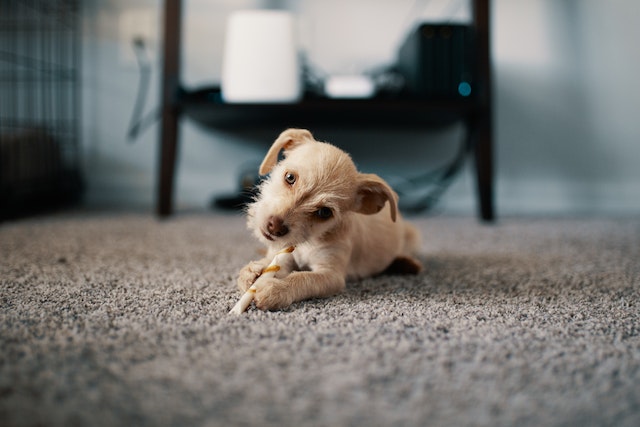- Dog Beaches
arrow_drop_down
- Dog Parks
arrow_drop_down
- Dog Camping Spots
arrow_drop_down
- Pet Sitting
arrow_drop_down
- Dog & Training Information
arrow_drop_down
- Dog Training
arrow_drop_down
- Dog Breeds
arrow_drop_down
- Dog Training
Leaving Your Puppy Home Alone for the First Time: Tips and Strategies to Make it a Success
- Puppy
- Training
-
Mar 24
- Share post

Bringing a new puppy into your home is an exciting experience, but it also comes with its own set of challenges. One of the biggest challenges is figuring out when you can leave your puppy alone for the first time. Puppies are social animals, and they thrive on human interaction, so leaving them alone can be stressful for both you and your furry friend. So, when can you leave a puppy alone for the first time? Let’s explore some factors that can help you determine the answer.
When can you leave a puppy alone for the first time?
The age and development of your puppy play a significant role in determining when you can leave them alone for the first time. Young puppies need constant attention and care, and they can become anxious and distressed when left alone for extended periods. Experts recommend waiting until your puppy is at least 4 to 6 months old before leaving them alone for more than a few hours. This is because at this age, puppies have better bladder control and can hold their pee and poo for longer periods.
Is leaving a puppy alone for too long bad?
Leaving a puppy alone for 8 hours is not recommended, especially if they are younger than 6 months old. Puppies require constant attention and care, including feeding, potty breaks, and playtime. Leaving a young puppy alone for too long can lead to separation anxiety, destructive behavior, and even health issues.
How do I calm my puppy down when left alone?
It’s not uncommon for dogs to feel anxious or stressed when left alone at home. One way to help your dog feel more relaxed is to ensure they have had enough exercise before you leave. Take your dog for a walk, play a game of fetch, or engage in another form of physical activity to help tire them out.
Provide your dog with interactive toys, such as puzzle toys or treat-dispensing toys, to keep them occupied and mentally stimulated while you’re gone.
How do I train my dog to stay home alone?
You can start by leaving the puppy alone for very short periods of time and gradually increasing the duration as the puppy becomes more comfortable. This helps the puppy gradually adjust to being alone and reduces the likelihood of developing separation anxiety.
Every puppy is unique and may respond differently to different training techniques. You will need to tailor your approach to the individual puppy and their specific needs.
We have written another post to talk about the steps you can train your puppy to be alone at home.
Want to bring your dog to a café? Let them enjoy some tasty treats and drinks too?…
After moving to Brisbane, we’ve spent a lot of time exploring the area with the…
When choosing a pet that fits your lifestyle, cost and ease of care are important…
In Australia, many people own dogs or cats, but finding a hotel that allows pets can…
Last week, we took our dog to the beach, and after playing, he was covered in sand. We…
For pet owners, their own dogs are undoubtedly the best source of joy, capable of…
